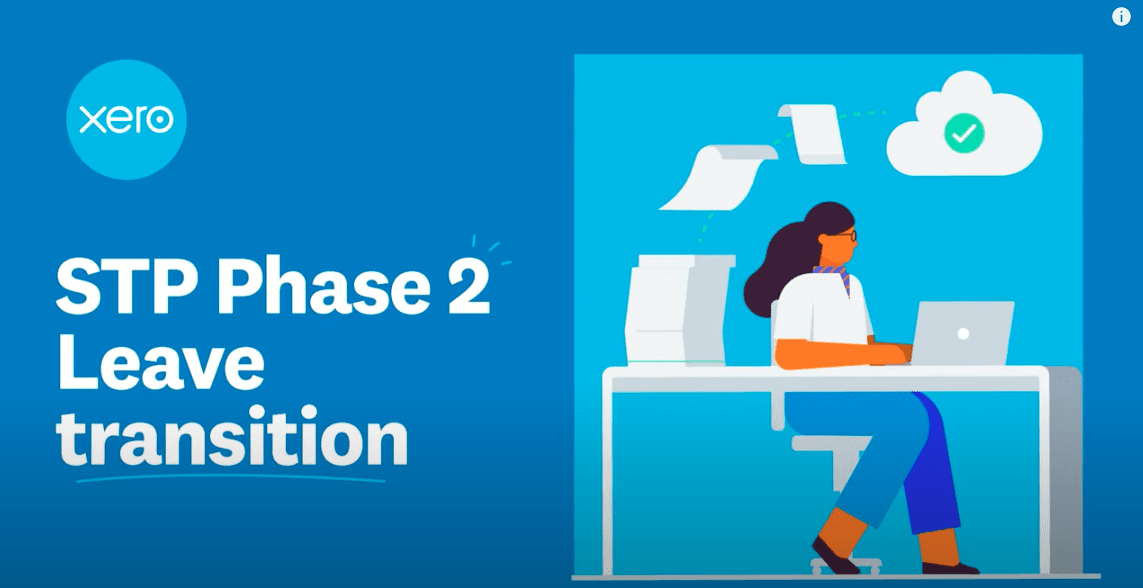All three stages of Xero’s STP Phase 2 rollout are now available
Over recent months, Xero has been keeping us updated on Xero’s Single Touch Payroll (STP) Phase 2 rollout.
This will see businesses build on their existing STP reporting to share more information with the ATO and other government agencies whenever you process a pay run.
Xero has now announced that all three stages of the rollout are available, meaning you can get your payroll data STP Phase 2 ready today.
Not sure where to start? Xero has compiled all the information you need.
Xero’s STP Phase 2 reporting deferral is through to 31 March 2023, meaning Xero Payroll customers will have until the New Year to activate STP Phase 2. However, we strongly recommend getting your payroll data ready as soon as possible to stay ahead of this important compliance deadline.
How to complete each step of your transition to STP Phase 2 in Xero
To start your transition now, head over to the STP Phase 2 Portal in Xero Payroll to progress through each of the following steps:
Step one
The first part of this process is transitioning your existing employee profiles to be STP Phase 2 compliant. This means providing new details, like whether they’re an employee or contractor. Step one also includes providing additional information when onboarding new employees to Xero Payroll. More information can be found here.
Step two
You’ll need to identify and update certain pay items with the new earnings categories defined by the ATO for STP Phase 2 reporting. This is because gross amounts for each income type will now need to be reported as a separate itemised amount, like overtime or allowances. Head to Xero Central for more details, including a breakdown of the different earnings categories.
Step three
This is the final step in the STP Phase 2 transition which will break down paid leave into additional subcategories. Xero supports users with a guided experience in payroll so you can easily update existing paid leave types to meet the new ATO reporting requirements. You may also find that some of your leave pay items already have the correct reporting category assigned. Visit Xero Central to learn more about this stage.
TIP: Remember to mark each step as complete in the STP Phase 2 Portal before moving forward. This ensures your payroll data is accurate and could help reduce filing errors later down the line.
Reporting all purpose allowances
With STP Phase 2, all purpose allowances must be disaggregated, meaning they’re reported separately to the employee’s hourly or ordinary earnings rate.
In Xero Payroll, you can create a separate allowance pay item with the appropriate type for each allowance included in the all purpose amount. You will also be able to select an option for the allowance to be included in the calculation of overtime and paid leave rates.
This is intended to reduce the manual burden on payroll admins to calculate and adjust an employee’s overtime or paid leave within their payslip. This occurs when an employee’s award states that both the allowance is to be paid for all purposes — including when calculating leave and overtime. Head to Xero Central for more information on these changes.
There’s no time like the present – start transitioning your payroll data today
Now that all three stages of Xero’s STP Phase 2 rollout are available, it’s time to transition your payroll data. As we come closer to the deadline, the sooner you can tick this off your to-do list, the more prepared you’ll be.
Remember, all employing Australian businesses must become STP Phase 2 compliant. So if you’re working with Allan Hall to make the transition, keep in mind that our accountants are also helping others to do the same. Stay patient as we work through the process, and in the meantime, check out Xero’s Resource Hub or Xero Central for more information.
Further support
To help you navigate the transition to STP Phase 2, Xero has created a comprehensive guide. This has what you need to know (and do) to make the move, from step-by-step instructions to detailed explainers on leave, earnings and reporting categories.
Looking for more information? Head to Xero Central or refer to the ATO’s employer reporting guidelines.
What’s more, Allan Hall’s Accountants are also here for support, so reach out if you need further guidance from our team of Xero Certified Advisors.






